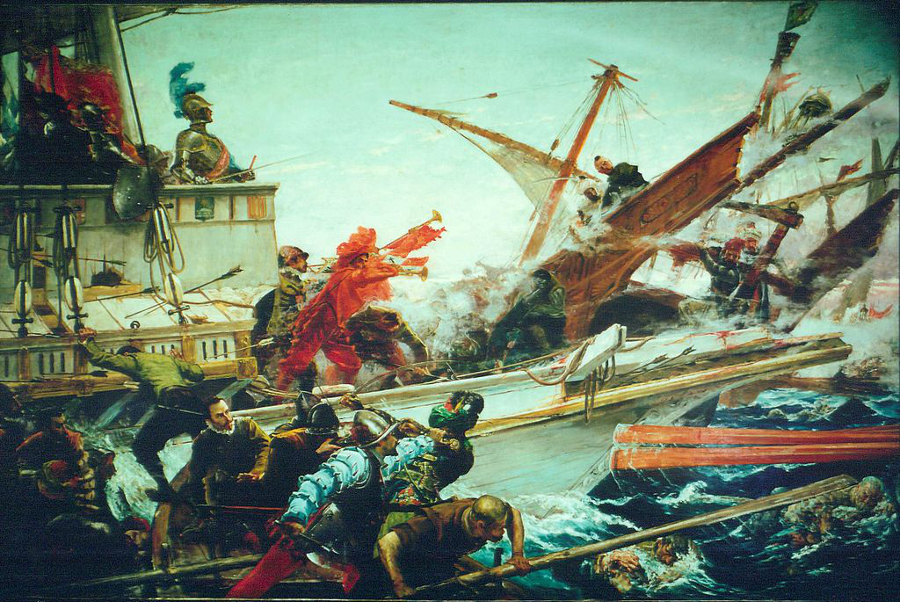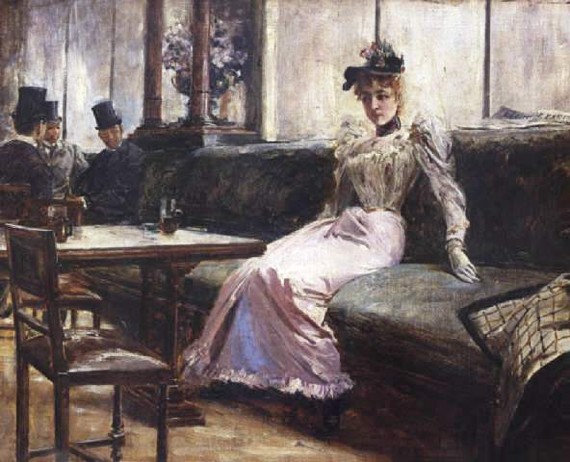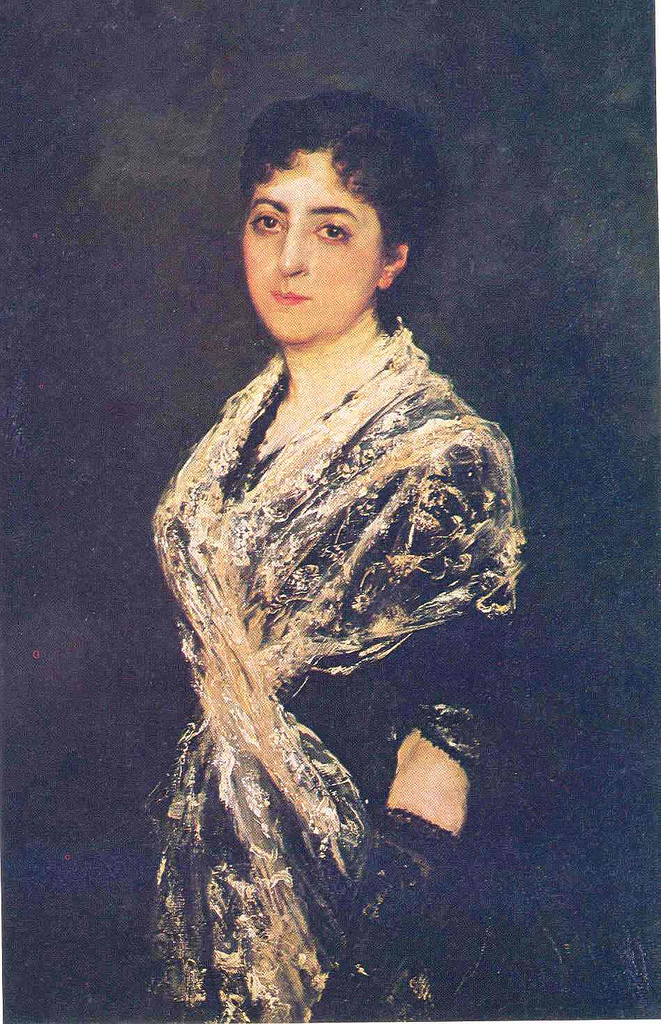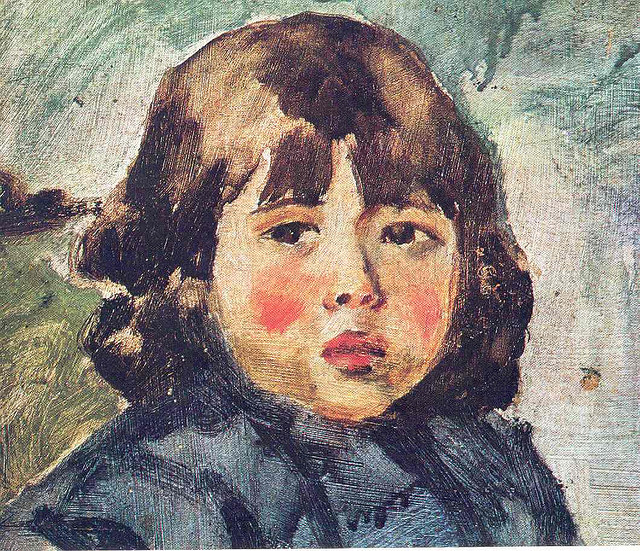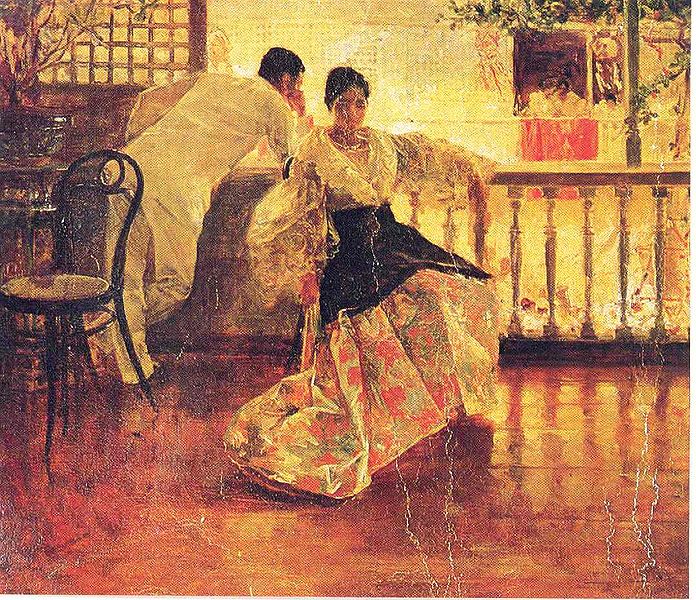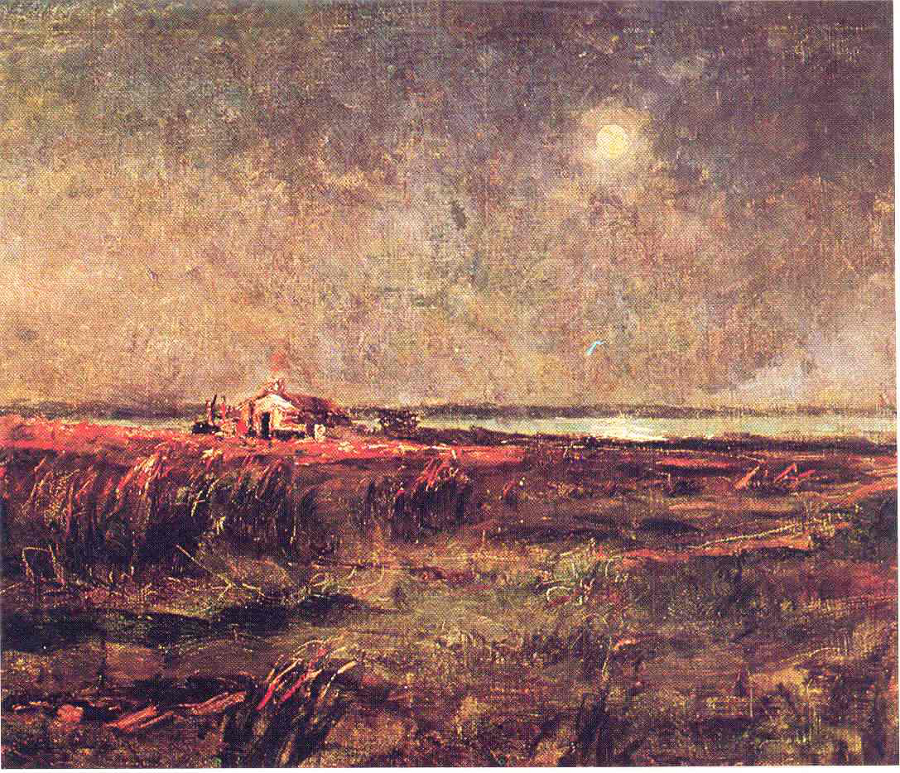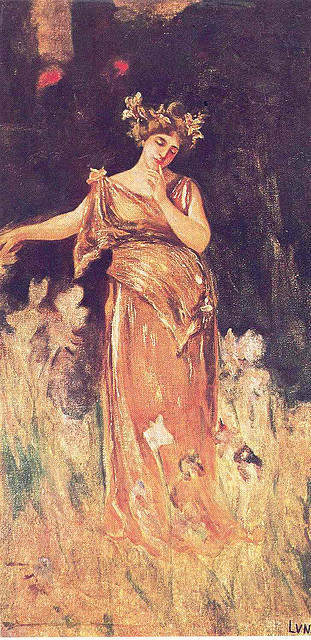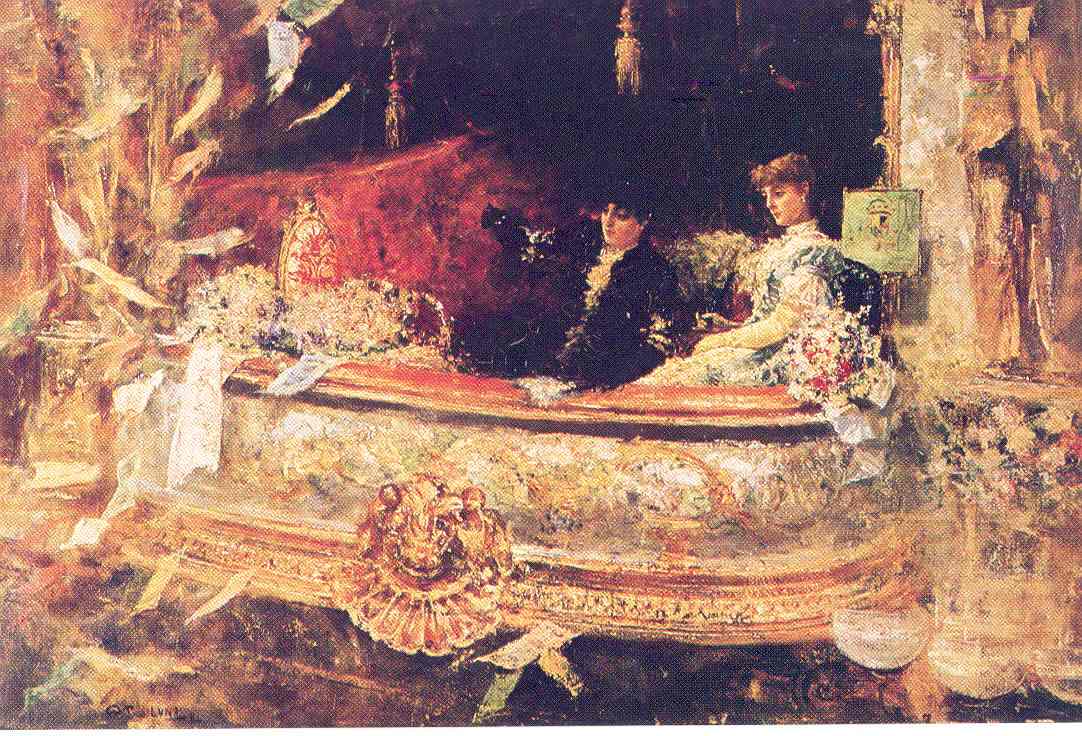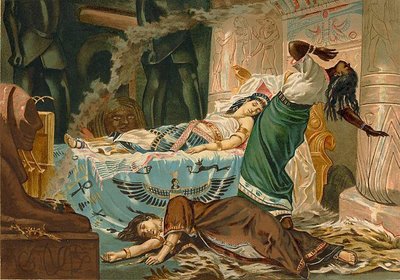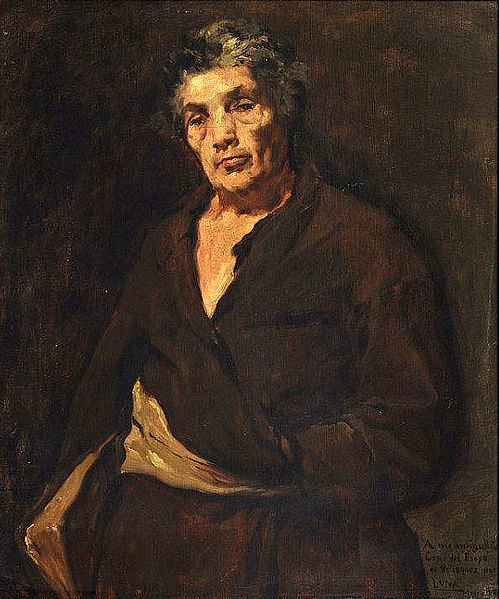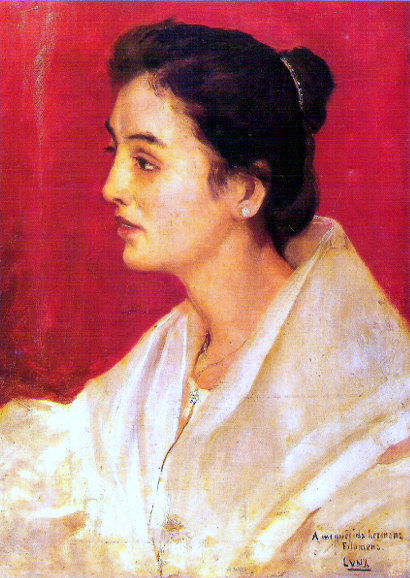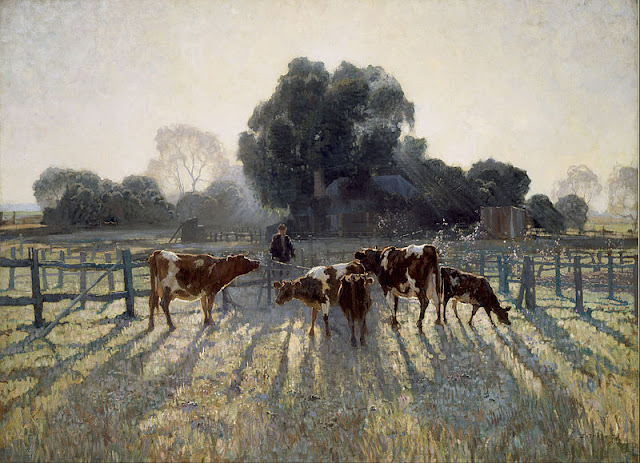Juan Luna - Paintings Collection
"The Battle of Lepanto", painted by Luna in 1887.
Features Don Juan of Austria in battle in 1571 while at the bow of a ship.
- was a Filipino painter, sculptor and a political activist of the Philippine Revolution during the late 19th century. He became one of the first recognized Philippine artists.
Regarded for work done in the manner of the Spanish, Italian and French academies of his time, Luna painted literary and historical scenes, some with an underscore of political commentary.
Spoliarium, 1884.
Spoliarium depicts bloody carcasses of slave gladiators being dragged away from the arena where they had entertained their Roman masters, with their lives.
The painting was submitted by Luna to the Exposición Nacional de Bellas Artes in 1884 in Madrid, where it garnered the first gold medal. In 1886, it was sold to the Diputación Provincial de Barcelona for 20,000 pesetas.
It currently hangs in the main gallery at the ground floor of the National Museum of the Philippines, and is the first work of art that greets visitors upon entry into the museum.
La Marquesa de Monte Olivar, 1881.
A portrait of the young Marchioness of Monte Olivar.
A portrait of the young Marchioness of Monte Olivar.
Una Chula II, 1885.
Una Chula II is a 1885 painting portraying a lower class Madrileña (woman from Madrid) sitting squarely with arms resting on a chair, a pose that “almost mannishly exuding sexual confidence and worldliness, holding a lit cigarette between two fingers in a flirtatious way. The burning tip of the cigarette acts as an enhancement to the female’s “painted lips” that supports a “slight smile”.
Una Chula II is a 1885 painting portraying a lower class Madrileña (woman from Madrid) sitting squarely with arms resting on a chair, a pose that “almost mannishly exuding sexual confidence and worldliness, holding a lit cigarette between two fingers in a flirtatious way. The burning tip of the cigarette acts as an enhancement to the female’s “painted lips” that supports a “slight smile”.
Portrait of Jose Rizal. Painted in oil, in Paris.
La Bulaquena, 1895.
Literally "the woman from Bulacan". The woman in the portrait could be one of the women courted by Luna when he lost his wife. Luna killed his wife of jealousy.
Governor Ramon Blanco, 1880's.
Portrait of Governor Ramon Blanco, Spanish Governor-general of the Philippines from 1893 to 1896.
Portrait of Governor Ramon Blanco, Spanish Governor-general of the Philippines from 1893 to 1896.
La Marquesa de Monte Olivar, 1881.
A portrait of the young Marchioness of Monte Olivar.
Souvenir de 1899, 1899. Souvenir de 1899, was completed by Luna on May 21, 1899, in Leitmeritz, Bohemia, after his meeting with Rizal’s bosom friend, Dr. Ferdinand Blumentritt.
Odalisque, 1885.
The Odalisque one of Luna's "Academic Salon portraits" that followed the standards of proper proportion and perspective, and realistic depictions with “an air of dignity and allure”. Although less polished compared to Luna’s other works of art, the Odalisque is typical of the well-planned characteristic of the artist’s portraits. The Odalisque is one of the paintings that made Luna as an officially accepted artist at the Salon of Paris. The Odalisque was a part of the painting collection of Philippine national hero Jose.
Indio Bravo, 1880. Indio Bravo by Juan Luna
Ensueños de Amor, 1890.
Literally "Daydreams of Love", is a "dreamy" oil on wood painting. It depicts Luna's wife Maria de la Paz Pardo de Tavera while sound asleep.
Literally "Daydreams of Love", is a "dreamy" oil on wood painting. It depicts Luna's wife Maria de la Paz Pardo de Tavera while sound asleep.
El Pacto de Sangre (The Blood Compact), 1886.
The Blood Compact portrays the blood compact ritual between Rajah Sikatuna and Miguel Lopez de Legazpi who is accompanied by other conquistadors.
Mi Hijo Andres. Portrait of Andres, Juan Luna's son.
Tampuhan, 1895.
Tampuhan is a 1895 classic oil on canvas painting. It depicts a Filipino man and a Filipino woman having a lovers' quarrel.
Nena y Tinita, 1897.
Nena y Tinita (Nena and Tinita) by Juan Luna
Despues del Baile.
Despues del Baile (After the dance by Juan Luna)
Puesta Del Sol, 1880's.
Puesta Del Sol (Sunset) is a scene presumably somewhere in the north coast of France, which Luna often visited.
Idilio by Juan Luna.
Nu femeni, 1885. Nu femeni is an oil on canvas painting by Juan Luna.
Damas Romanas, 1882.
Damas Romanas or "The Roman Dames" is an oil on canvas painting by Luna when he was a student of the school of painting in theReal Academia de Bellas Artes de San Fernando (Royal Academy of Fine Arts of San Fernando) in Madrid, Spain in 1877. Alejo Valera, a Spanish painting teacher, took Luna as an apprentice and brought him to Rome where Luna created Las Damas Romanas in 1882. Luna spent six years in Rome from 1878 to 1884.
La Muerte de Cleopatra, 1881.
La Muerte de Cleopatra (The Death of Cleopatra) was awarded silver medal by Exposición Nacional de Bellas Artes (National Exposition of Fine Arts) in Madrid in 1881.
Espana y Filipinas, 1886.
Espana y Filipinas is oil on wood painting, it is an allegorical depiction of two women together, one a representation of Spain and the other of the Philippines.
Esopo. A painting by Juan Luna.
Mi Hermana. Portrait of Luna's sister, Numenaria.
Sources:
Kahimyang.com
wikipedia.org
